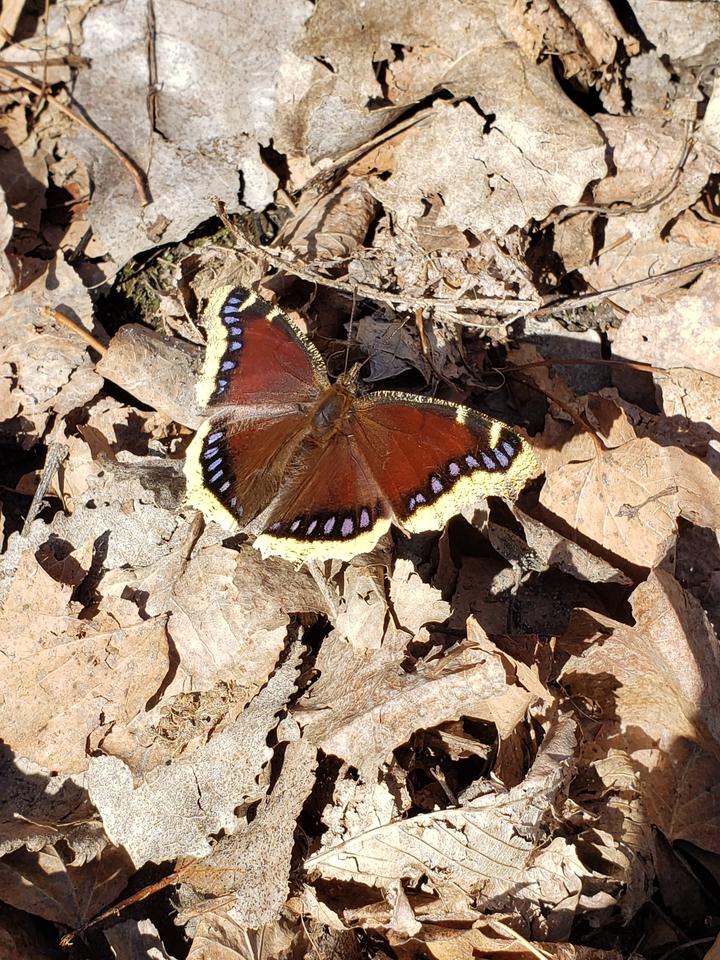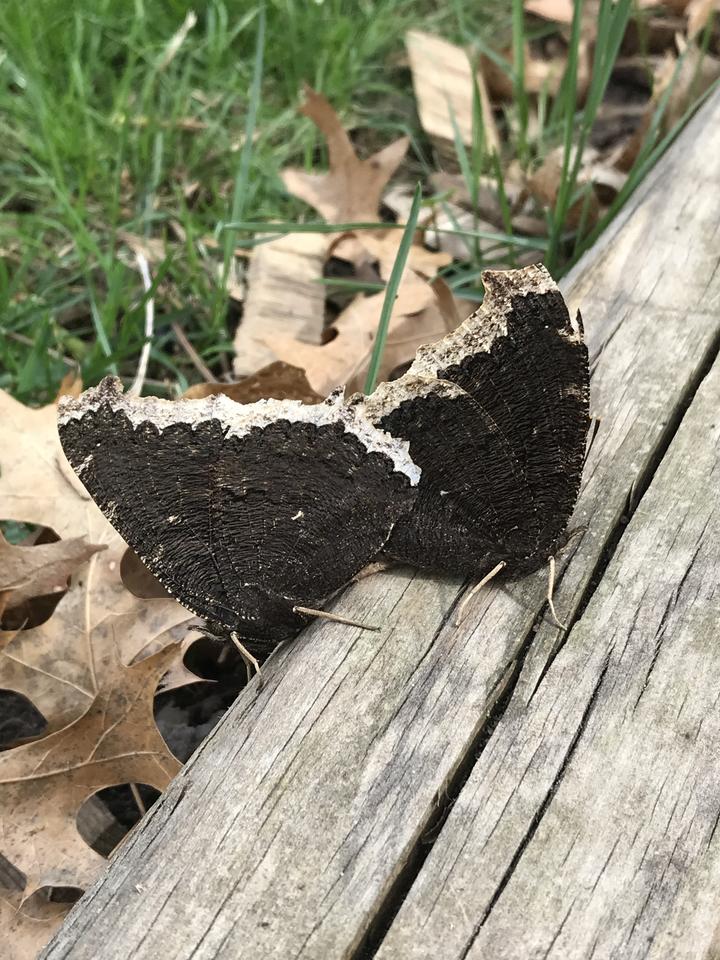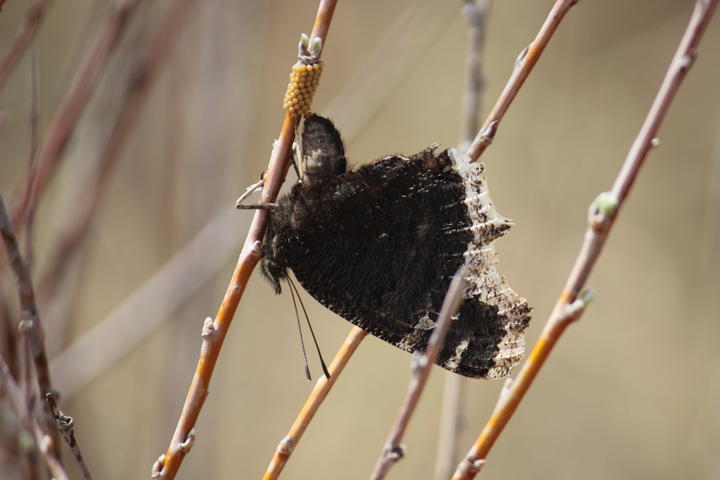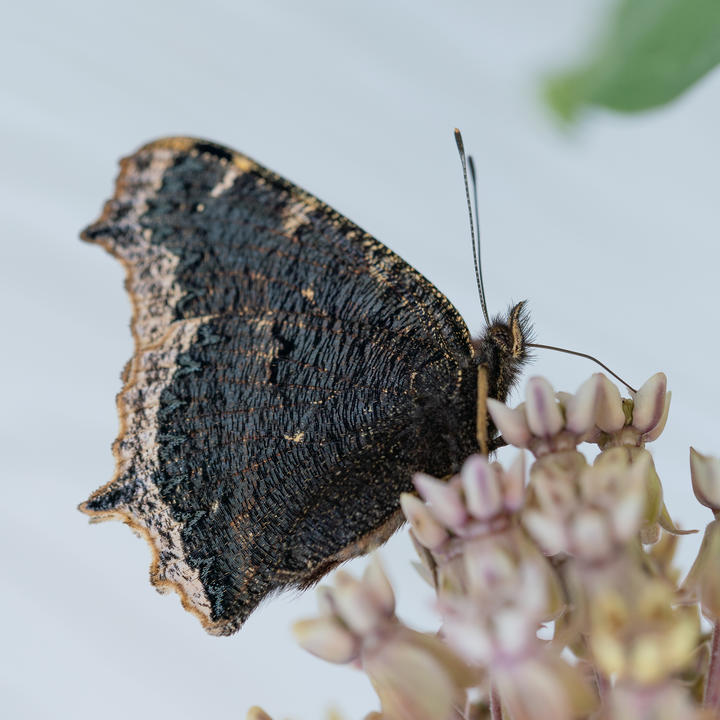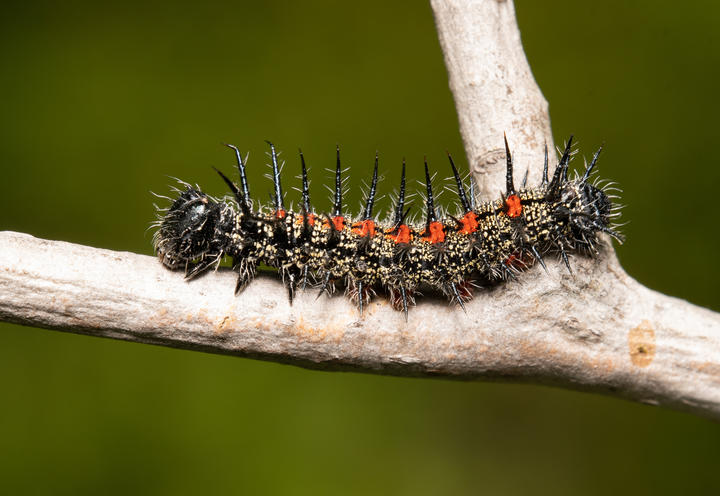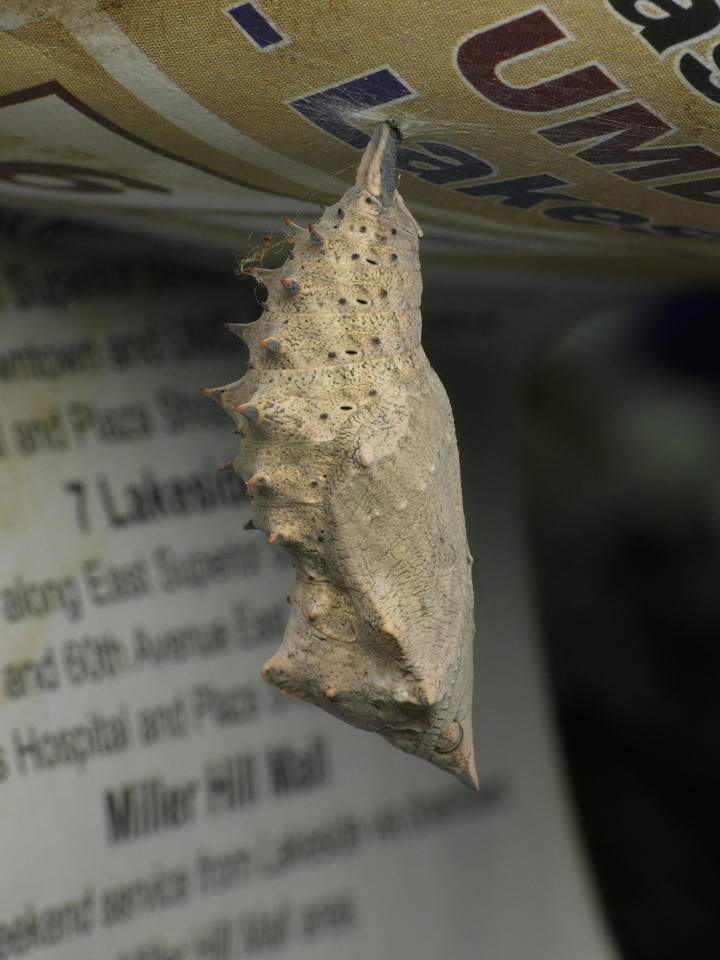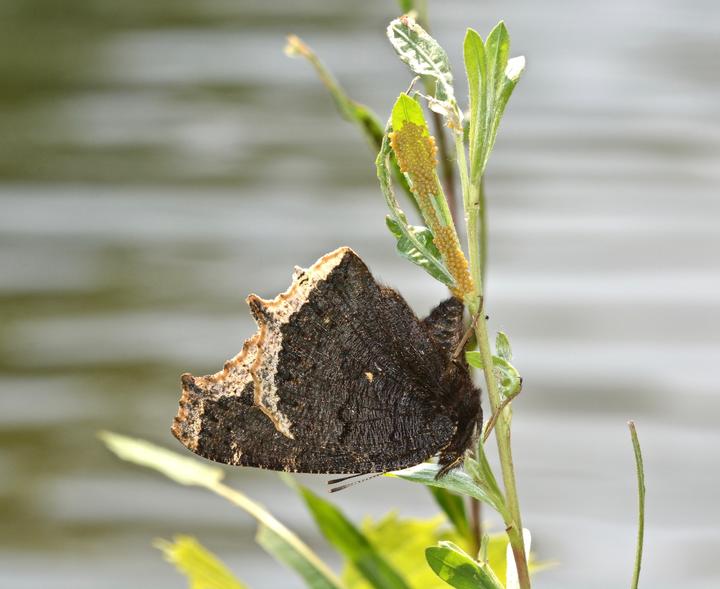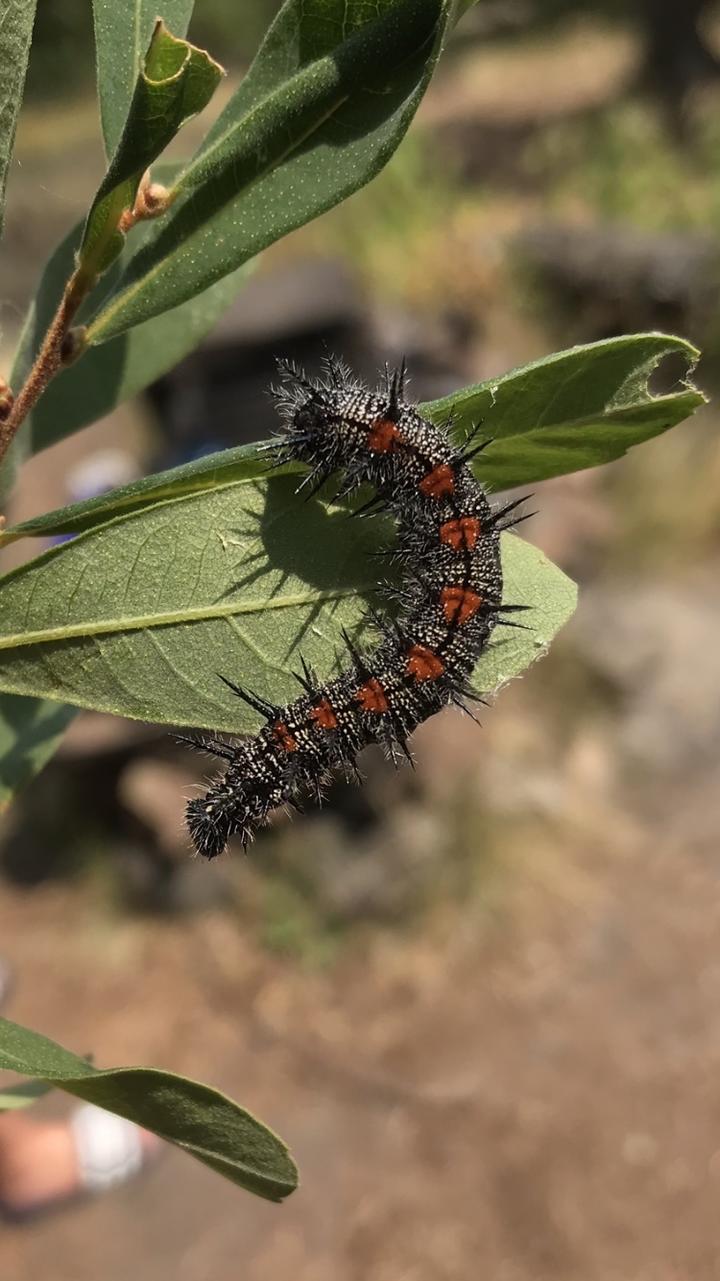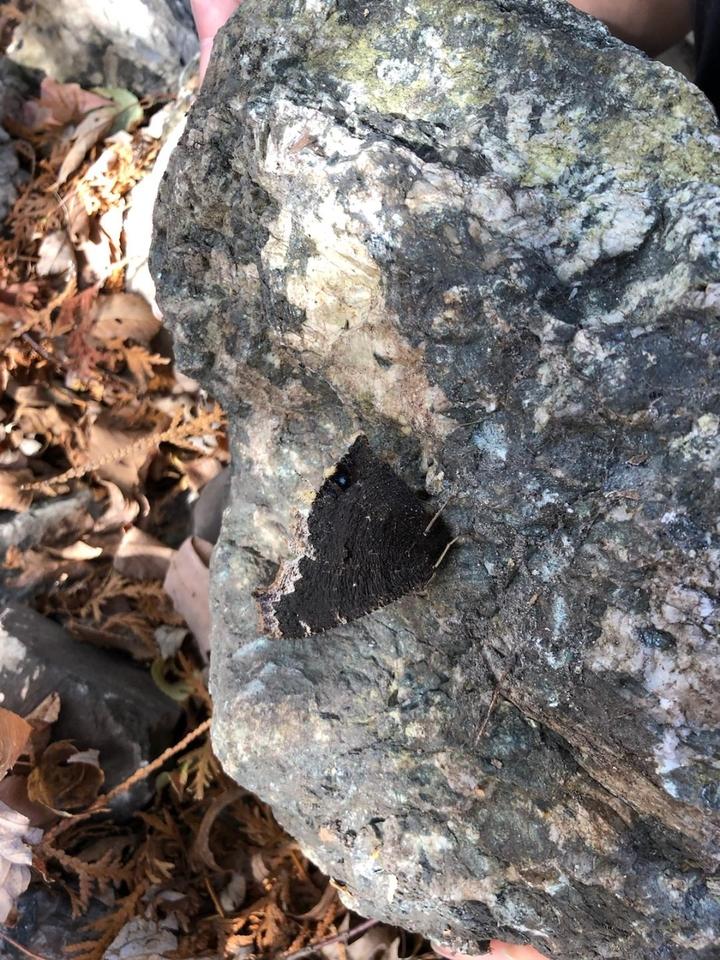More names for this insect
Anishinaabemowin: Memengwaa (butterfly)
Dakota: Kimamana (butterfly)
The Dakota and Anishinaabe were among the earliest people to name Minnesota’s plants and animals, as well as to understand them in relation to Minnesota’s climate and seasons. Those original names are still in use, and several are included on the Season Watch website.
Latin (or scientific name): Nymphalis antiopa
The scientific community has a convention of assigning agreed-upon Latin names to every kind of organism. Using scientific names helps people communicate confidently about the same organism and organize lifeforms based on how closely related they are.
Page contents
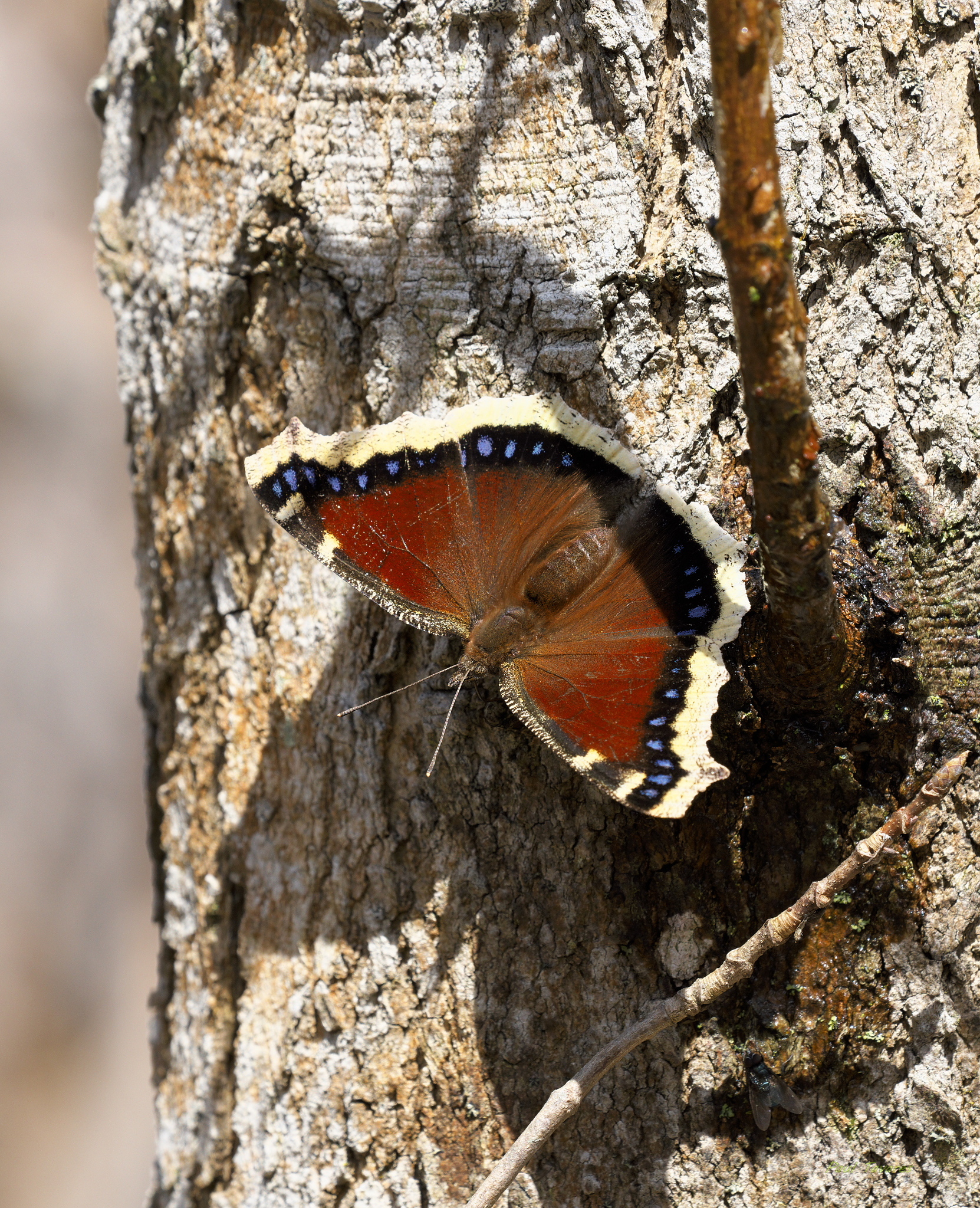
April 25, 2020, Hamilton County, Ontario, Canada
Photo by © Paul Tavares, some rights reserved (CC-BY-NC)
iNaturalist observation
About the mourning cloak
- The mourning cloak is a large butterfly that is dark red or brown in color with bright blue spots near the yellow margins of its wings.
- Adult butterflies become active in early spring. They then mate for the first time of the season and lay clusters of up to 200 eggs.
- By summer, the first group of caterpillars have hatched, grown, and metamorphosed into adult butterflies.
- These adults tend to be mostly solitary and subsist on mud, sap, and rotted fruit.
- In winter, adult butterflies hibernate in trees.
- Fun fact: Mourning cloaks live up to a year long, making them some of the longest living butterflies.
Visual guide to phenology
Watch for mourning cloaks' presence (or absence) and abundance at different times of year.
Note to observers
This page explains general clues to watch and listen for when observing mourning cloak phenology. However, this page does not explain how to identify this butterfly or collect data in a standardized way.
- Consult a field guide for help with identification.
- For guidance on collecting data, see Nature’s Notebook.
Graphs and historical data
Note: The Orientation Center provides a map, as well as information on reading graphs; interpreting summary statistics, who collected the data and how; and how to download datasets for independent exploration.
First seen
- Earliest: March 5 (occurred in 2000)
- Average: April 6
- Latest: April 28 and 29 (occurred in 1996 and 2013)
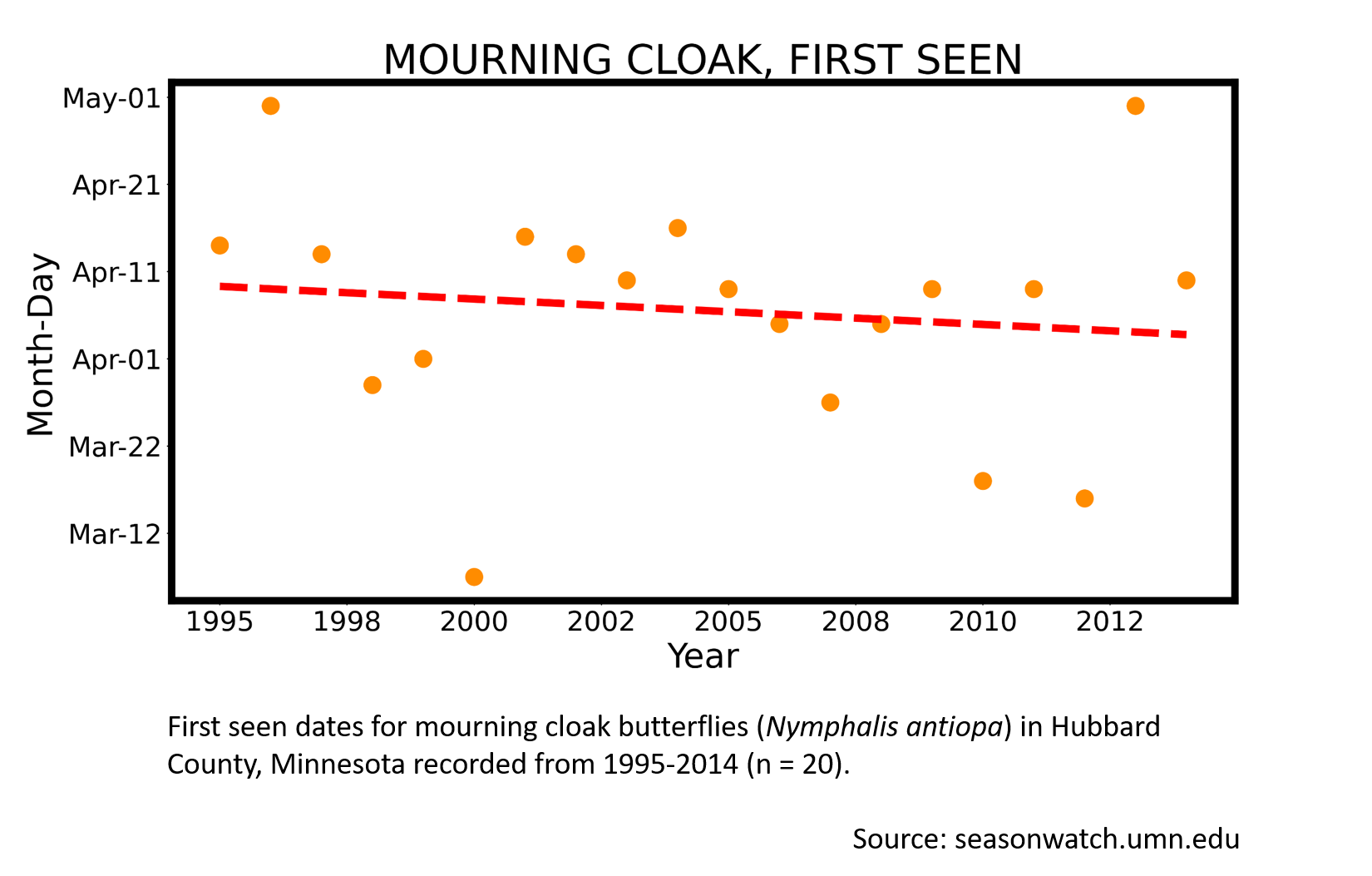
Last seen
- Earliest: August 23 (occurred in 1998)
- Average: October 14
- Latest: November 7 (occurred in 2002)
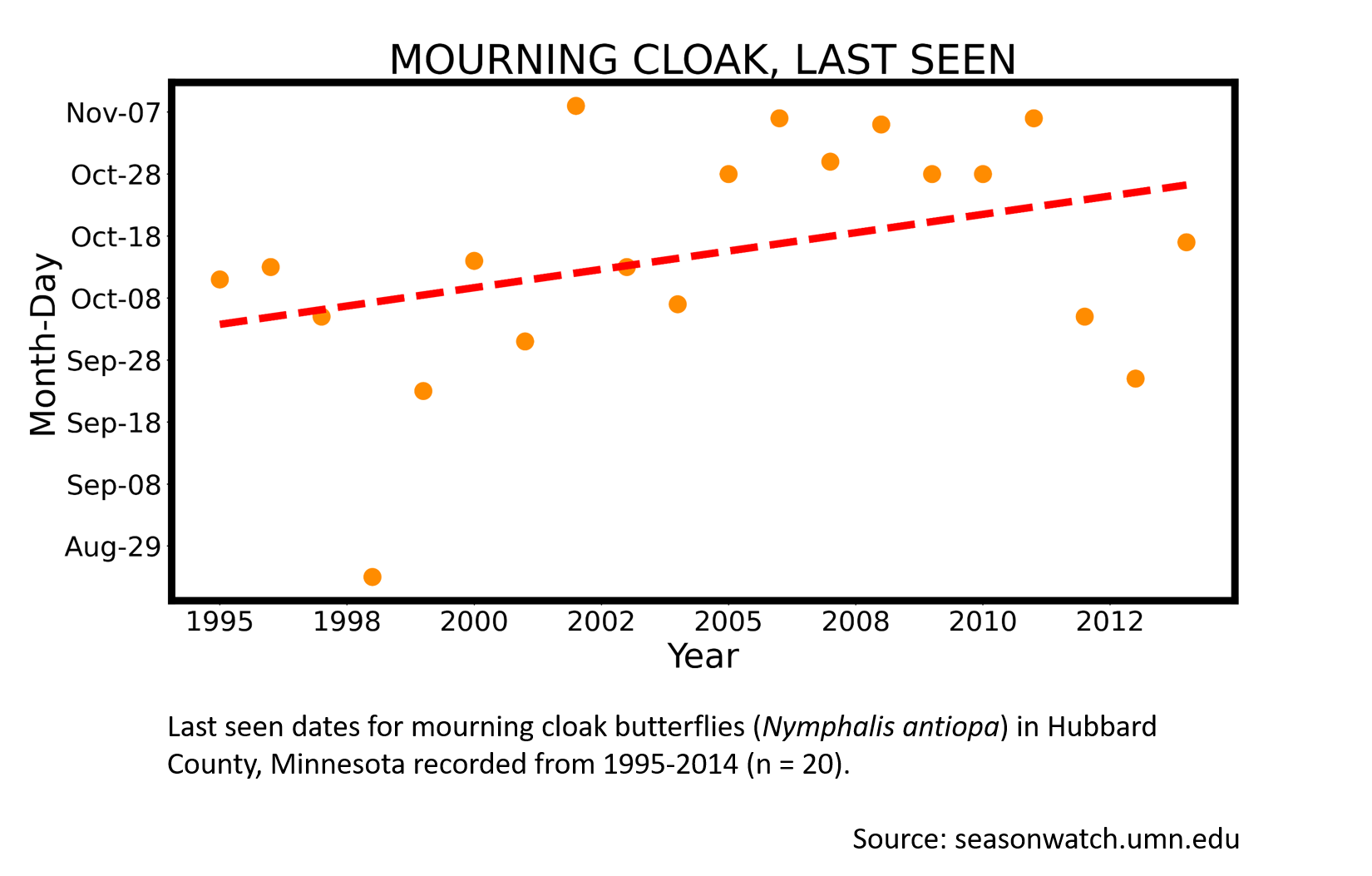
More resources
Keep exploring Season Watch
Keep exploring Season Watch
Co-author: Lynsey Nass, Minnesota Master Naturalist
